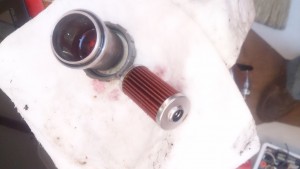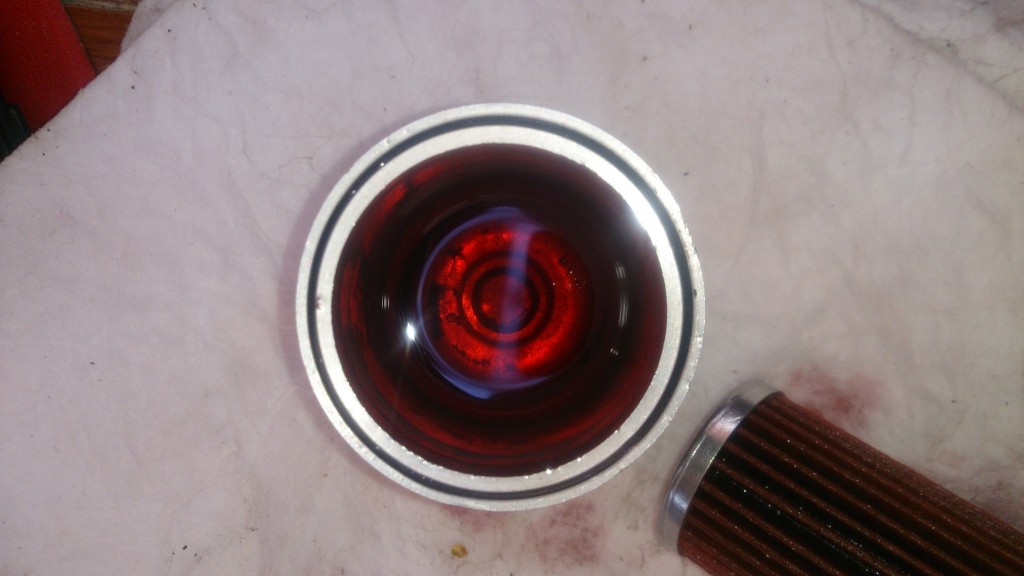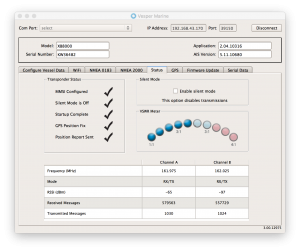Will we make our date? It is an unexpected question to be pondering.
We didn’t ‘‘swing’’ the compass yesterday because of engine problems.
In the previous post, I said that the engine was drawing fine through the electric lift pump that I had installed even when I left the electric lift pump turned off. Now I’m not too sure what to think, but I have an idea, and have acted upon the idea.
A diesel engine has at least two pumps associated with it. Large commercial diesel engines have many more. I’ll explain that in a moment.
The first pump, called the lift pump, is a low-pressure pump that gets the fuel to the fuel injection system. It lifts the fuel from the fuel tank up to the engine.
I’m engaged in problem solving, detective work really. It is much more like Sam Spade than Sherlock Holmes. Spade was always floating one idea, finding it was incorrect, and moving on to the next idea. (The author, Dashiell Hammett, had been a detective for the Pinkerton agency, so he knew what he was writing about.)
Between the lift pump and the fuel tank is a large filter called the secondary filter. It filters larger debris from the fuel, and also separates any water in the fuel tank. The water is heavier than the diesel fuel and sinks to the bottom of the container that holds the filter.
Between the lift pump and fuel injection system is another filter called the primary filter. It is small and filters debris down to several microns.
The fuel injection pump is a high-pressure pump that forces fuel through the injectors into the cylinders. The injectors have very fine jets (very small holes) that spray the fuel in a very precise spray pattern.
Commercial diesels and high-performance diesels have an injector pump at each injector. This allows them to use very high pressure and control that pressure more precisely. With a single injector pump, the lines (small metal pipes) carry the high pressure fuel from a single injector pump to each injector. A myriad of problems are introduced, none of which are large enough to effect a small diesel like ours.
Interestingly, diesels like ours, which is a Yanmar 3GM30F, are completely mechanical. There is even a place in the front of the engine to insert the handle to start the engine by turning a crank.
I had, perhaps incorrectly, figured out that the mechanical lift pump had problems and placed an electric lift pump between it and the fuel filter. The problem seemed to go away, so I replaced the mechanical lift pump. However, it seems as if the problem has not gone away.
If I had thought about this and placed in the context of my life fixing gasoline engines, I might have remembered limping a 73 Toyota Celica across the Verrazano-Narrows Bridge, down the BQE into Flatbush Brooklyn.
The problem, and I knew it during the entire limp, was a clogged fuel filter. The engine would run, and then not run. Stopping and waiting for a few moments would allow the debris to fall off the filter, and we could go for a little while longer.
The clogged fuel filter might explain why the mechanical lift pump is not getting fuel to the injector pump. In fact, in the setup board Caro Babbo, no lift pump should actually be necessary because the fuel tank is higher than the engine.
Fisheries had two of the primary filters that I need in stock. I bought them both.

The filter sits in a cup with a retaining ring that attaches the cup against the top half of the fuel filter assembly (the mount). The filter itself is pushed onto a tube that leads to the injection pump.

The fuel travels from the outside of the filter to the inside.
In the bottom of the cup was very fine debris. Is this the problem?

Clogged fuel filters are very common problems with marine diesels, and it would explain why the mechanical lift pump is not able to get fuel to the injectors. This filter should be replaced every 350 running hours. We have not replaced in the 300 hours we have run this engine, and I suspect this is the original filter.
Friday or Saturday, when we can have Derek or Harrison standby with the dinghy to come rescue us, we need to take CaroBabbo into Lake Union and test the engine.
On the good side, I reconfigured the AIS so that rather being a router, it uses my mobile phone as a router. This way, all of the electronic devices that can access the Internet can access the AIS at the same time.
We use the Android app BoatBeacon from a company in Wales. BoatBeacon connected immediately to the AIS and displayed the ships in the area on our android tablet. It’s wonderful when software works as advertised the first time.
[For geeks: the router software in the phone will not allow me to assign a fixed IP to the AIS. So each time we bring the phone to the boat we may need to tell any software that accesses the AIS the AIS’s IP address. However, I’ve worked with a number of devices that do not flush their DHCP table even after a reboot, so IP addresses can be relatively static.]
I also accessed the AIS device using the very rich Mac app instead of the very ‘‘thin’’ android app. This app, besides giving very detailed access to the AIS device, also gives much more detail about the antenna standing wave.

From the articles that Erwin has provided, we may not be in that bad of shape. I still need to go up the mast to replace the steaming light and will inspect the VHF antenna directly, then.
Yesterday, I also placed the order for the plexiglass to make transparent drop boards for the main cabin companionway. The difference in ambience down below with light coming through the companionway is remarkable.
Yesterday very little was accomplished in terms of moving forward. Most of the day was lost debugging the engine.
Today Jennifer and I are going to Tacoma to see my friend David Bessen who is there visiting colleges with his daughter.
The engine presents problems in that if I cannot solve them myself I will need to schedule and get a diesel mechanic involved. Suddenly our departure date is in jeopardy.

Fuel filters! Very often over looked. I had a similar problem with a 72 Karmann Ghia. I was on the Throgs Neck Bridge with inter mitten power, give it a rest and a few hundred feet further. I finally removed the fuel bowl at 2am on the bridge, (remember the days when you could actually stop and not have the S.W.A.T teams come out?), and found it was full of rust particles from the tank. A fuel filter would have really helped. When I was changing oil at the local Grease Stop, I found out from diesel drivers that it is always better change the filter more than recommended. Good luck with the engine!
Yeah. It’s going to turn out to be something ridiculously simple rather than anything complex. But I guess this is how we learn.